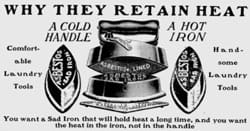Asbestos: What Is It?

Asbestos is a group of seven naturally-occurring, fibrous minerals, which include tremolite, actinolite, anthophyllite, chrysotile, amosite, crocidolite, and Libby amphibole. Asbestos has a unique chemical makeup, so it does not conduct heat or electricity and is fire-resistant. For these reasons, it was used in many products for decades. However, when the fibers of these dangerous minerals are inhaled or ingested it can result in asbestos-related diseases like mesothelioma, lung cancer, asbestosis, or other cancers. It can often take decades before a doctor can diagnose these diseases because symptoms typically appear anywhere between 15-60 or more years after exposure.
Where Can You Find Asbestos?
Since asbestos occurs naturally, it can be found all over the world. Asbestos mines were once as common as coal mines since the demand was high for industrial and commercial uses. It may surprise you to hear that despite the known dangers of asbestos, United States asbestos mines remained active until the early 2000s. Asbestos was used just about anywhere it was deemed useful whether it was for insulation or heat resistance.

Military Bases and Compounds
Military veterans account for one third mesothelioma deaths in the U.S. Anyone who served in the United States military between 1920 and 2000 is at high risk for developing an asbestos-related disease. Not only was asbestos exposure common for military personnel in the past, but asbestos products are still being removed from Naval ships and military bases today, putting workers and soldiers at risk for fatal, future diagnoses.

Power Plants and Refineries
Asbestos exposure was common for workers in power plants built prior to 2000. Power companies made widespread use of asbestos in a variety of ways, including pipe and block insulation, construction, clothing, and more. Not only are workers at power plants at risk, but their spouses and families are as well since there is an increased possibility of secondhand asbestos exposure (sometimes known as take-home exposure).

Public Arenas
Asbestos-based construction materials were used in many public buildings until the 1970s. This puts construction workers and demolition/remodeling workers at risk. Asbestos was typically used within a structure’s insulation, concrete, pipes, and plumbing. Because these buildings are available to the public, anyone can be exposed when asbestos is disturbed. Although it’s typically limited to construction and demolition workers.

Consumer Products
Cheap and readily available, asbestos was originally used in many consumer products without regard to its potential hazard. According to the National Cancer Institute, up to 5,000 consumer products contained asbestos, including small appliances, hairdryers, and building materials. Many of these products are still in use, posing serious exposure risks when they are handled, repaired, or damaged.

Public and Private Schools
Many U.S. school buildings were built during the peak of asbestos use. It could be present in the floor tiles, insulation, and other areas of older classrooms and buildings that have yet to receive attention. Today, teaching is a high-risk occupation for asbestos exposure due to these dangerous conditions, day after day, year after year.

Residential Homes
Houses built between 1940 and 1990 may contain asbestos in floor and ceiling tiles, roofing materials, pipe, and duct insulation, attack insulation, piping, joint compound, stucco, and more. During the industrial revolution, asbestos was considered a “miracle mineral,” because it was affordable, fire-resistant, and had insulating properties. These qualities made asbestos seem perfect for the construction of residential homes across America even though many of the manufacturing companies knew the products would cause fatal cancer.









